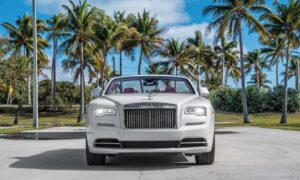On our recent trip to the United Arab Emirates last year, we decided to rent a car to tour Dubai and Abu Dhabi for six days. Many people, when they arrive in this country and intend to visit the main points, do so by bus, taxi or excursions, but we prefer to do it by car because of the freedom it gives and I can confirm that we were completely right.
Our goal is to clear any doubts that you might have about it in this post. Although we had barely found information on the internet about renting a car in the Emirates, so we were not very sure how the experience would turn out, we decided to do it mainly for one reason: the heat that it gets in this country in summer.
We didn’t feel like walking in the suffocating heat to the bus stop (which by the way has air conditioning) or the metro station or waiting to find a taxi. And with the car, we could comfortably reach any point in Dubai and Abu Dhabi.
Rent a car in the Emirates
As I was saying, we decided to visit Dubai and Abu Dhabi with a rental vehicle that we rented, and it is where we saw the most affordable price for our Emirates travel. The price for six days with airport pick-up was 180 dollars for a Hyundai Accent or similar, with four doors, an automatic gearbox, and air conditioning.
But Dubai is the capital of the world’s luxury cars, so you shouldn’t have any trouble if you decide to go for rent Bentley Dubai and enjoy your trip.
Why we chose it:
- There are no fees to pay by credit card
- Free cancellation and free modifications up to 48 hours before the pick-up
- They have telephone service available 7 days a week
- And we had read good opinions in blogs that we follow
What did the rent include?
Basic insurance CDW – Collision Damage Waiver (covers damage to third parties): Limitation of liability insurance for collision damage and vehicle theft insurance with an excess of 3,000 dirhams (that is, if we had an accident or our car was stolen, we had to pay the first 3,000 dirhams).
- Civil liability insurance and fire insurance
- Unlimited mileage
- Airport tax
- What was not included?
- Damage coverage
- Fuel: You had to return the car with a full tank, which is how they deliver it to you.
- Additional features:
- Additional driver: 30 dirhams per day
- Booster seat or child seat: 30 dirham per day
- GPS: 55 dirhams per day
The tolls: they charge you 5.05 dirhams for each toll you cross (which we crossed several times along the trip), up to a maximum of 35 dirhams per day.
When we went to collect the car we had a small problem, which fortunately was resolved without major incident. And it turned out that when we made the reservation we did not realize the airport in which we made it and the one we arrived at was not the same.
It turns out that the reserve’s airport fell about 65 kilometers from where we were It almost gave us something! But the guy told us not to worry that he would change the reservation and give us the car there, without having to go to the other office. Goodness!!
Finally, they gave us a new 4-door Nissan that we used for the first time. The car was petrol and automatic, like 99.9% of the cars here. As the car was new, we were afraid of causing any damage to it and having to deal with the franchise.
So to avoid it, we took out all-risk insurance at the airport, and so we didn’t worry, although fortunately, we didn’t have to use the insurance. The comprehensive insurance for 6 days cost us 189 dirhams, which in exchange is about 50 dollars.
What is it like to drive in the Emirates?
We have found the best roads, both in the city and outside the population, in the Emirates. Until now, the country where we have seen the best roads has been the US, but the Emirates surpasses it. It is practically impossible to find roads, both urban and interurban, that have less than 5 lanes in each direction.
But not only the roads are of quality; also the vehicles, which as I mentioned before, are all automatic (for me the best, as it is the most comfortable to enjoy driving), and petrol. The models seen around the country are mostly Japanese, Korean, and American; Europeans are seen less, and the few that are seen are usually German. The truth is that the fleet of vehicles is very new.



































